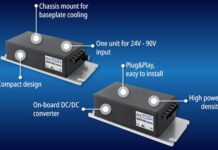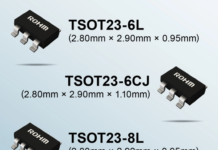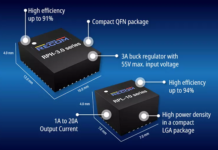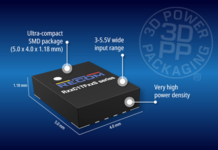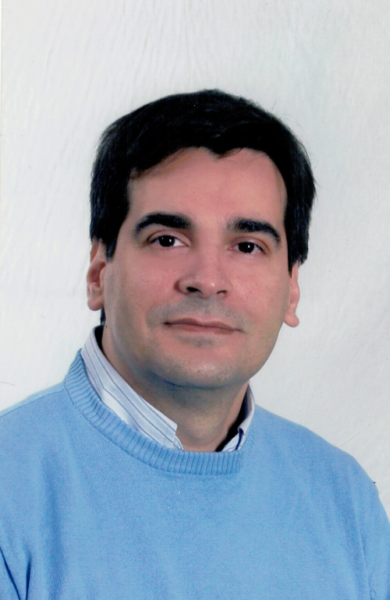
Aviation is a demanding industry with stringent performance, reliability, and quality requirements, and a growing need for decarbonization. Power electronics play a pivotal role in reshaping the design, operation, and control of aircraft electrical systems. However, achieving the high standards of aviation in power electronics presents unique challenges.
Traditional silicon-based power semiconductors face limitations in meeting the stringent requirements of aviation applications. Emerging technologies based on wide-bandgap (WBG) semiconductors like silicon carbide (SiC) and gallium nitride (GaN) offer promising solutions. These WBG semiconductors promise greater efficiency, faster switching speeds, and improved temperature capabilities, making them crucial for future electrified aircraft, including hydrogen-powered electric planes.
In an exclusive Q and A with Gianfranco DIMARCO, Marketing Engineer, Power Transistor Division, Automotive and Discrete Group, STMicroelectronics shares with Electronics Media how STMicroelectronics with its strong wideband semiconductor portfolio supports the design of power electronics in aviation and what can industry expect from ST collaboration with Airbus.
Electronics Media: What are the challenges and considerations specific to power electronics in aircraft electrification?
Gianfranco DIMARCO: Avionics is an incredibly challenging market with no room for failure. Products have demanding performance, reliability, and quality requirements and the industry also needs to realise its decarbonisation goals. Power electronics are already revolutionizing the electrical system design, operation, and control of today’s aircraft. Power electronics will have to play a very big role in future electrified aircraft, including hydrogen-powered electric planes. Obviously, power electronics for aviation must be reliable, efficient, compact, and lightweight. Aero-application requirements are difficult to meet for traditional power electronics using silicon (Si)- based power semiconductors. Emerging power electronics technologies based on wide-bandgap (WBG) semiconductors, including silicon carbide (SiC) and gallium nitride (GaN), promise to significantly enhance the performance of power electronics equipment through lower losses, faster switching speeds, and superior temperature capability.
Ref: https://curent.utk.edu/2023IndustryConference/papers/Journal_PE_26.pdf
Electronics Media: What are ST’s expertise on wide bandgap semiconductor in terms of technology, availability and services?
Gianfranco DIMARCO: STMicroelectronics is a global leader in power semiconductors and wide bandgap technologies. We have many years and customer relationships proving our success in power semiconductors for automotive and industrial applications. ST is the market leader at the cutting edge of the development of innovative power semiconductors with higher-efficiency products and solutions based on advanced materials, such as Silicon Carbide (SiC) and Gallium Nitride (GaN). We already have a strong, transformational presence in mobility and industrial applications, reinforced by a vertically integrated global SiC supply chain, to support our customers globally with electrification and decarbonization.
Electronics Media: What are the trade-offs between power density, efficiency, and cost in power electronic design for aircraft applications?
Gianfranco DIMARCO: In designing power electronics for aircraft, engineers make important trade-offs between power density, efficiency, and cost to prioritize safety. The behaviors of both GaN and SiC, of higher frequency operation, higher temperature capability, and higher power density (W/kg) with lower power consumption, are the right answer to satisfy the design requirements.
For example, hybrid converter topologies demonstrate greater than 99.5% efficiency through careful component selection and layout system optimization. The direct cooperation between the avionics industry and wide bandgap (WBG) manufacturers can accelerate electrification in avionics applications by using the best solutions of power module (able to hold a few MW of power) solutions, and innovative lighter thermal solutions in safety mode. In fact, new product architects must prioritize safety and rigorous certification needs above all. Through diligent tradeoff analysis guided by aviation standards, researchers continue advancing specifications that balance environmental performance, safety, and technological competitiveness. Overall, cross-sector cooperation helps advance power electronic solutions aligned with the exacting demands of aircraft applications.
Electronics Media: Can you share a roadmap to Research & Development planned under the collaboration?
Gianfranco DIMARCO: Airbus and ST are looking to define cooperation on future research projects using wide bandgap semiconductor materials to allow for more efficient and lighter power electronics, as these are essential for future hybrid-powered aircraft and full-electric urban air vehicles, like ZEROe and CityAirbus NextGen. For ST it is an opportunity to cooperate with a global leader in the aerospace industry, to understand the full architecture and partitioning of future electrified aircraft, and their advanced optimized solutions. It will position ST as an active and leading player engaged in the on-going decarbonization of the aerospace industry, in complement to the important momentum already achieved in electrification by ST for the automotive and industrial sectors. By addressing the high-end avionic sector, ST will also benefit from this cooperation to further develop its Wide Band Gap technologies. ST and Airbus have been exchanging for several years to explore the benefits of advanced Silicon Carbide (SiC) power MOSFETs as key enablers of aircraft electrification. Building on the positive evaluation results, showing state-of-the-art performances of ST devices, this agreement is a natural evolution of this relationship for the parties to continue collaboration on this important subject to help prepare the future of aircraft electrification and successfully contribute to the decarbonisation goals of the aerospace industry.
Electronics Media: What is the major advantage for aerospace industry transition to hybrid and full-electric systems?
Gianfranco DIMARCO: Vehicles designed for outer space, such as rovers and satellites, must operate in the harsh radiation environment of space. Electronics in these aerospace applications require components and technologies specifically designed to withstand the effects of gamma rays and heavy ions found in space. For short space missions, standard automotive technologies may be suitable, after rigorous reliability testing to evaluate their ability to survive in the space radiation environment.
For wide bandgap power devices, the effects of radiation are well understood for applications with maximum altitudes of 12-20km. These applications include avionics. New automotive technologies (i.e. FD-SOI and Phase Change memories) have also demonstrated resilience to these levels of radiation.
Electrification, whether partial hybrid or fully electric, will enable more efficient vehicles (reducing pollution) and new mobility systems like urban air transportation. For example, electric vertical take-off and landing vehicles could provide airport-to-city connectivity or new delivery services.
In summary, wide bandgap power components are transforming human mobility both on land and in the air by enabling electrified transportation solutions.



